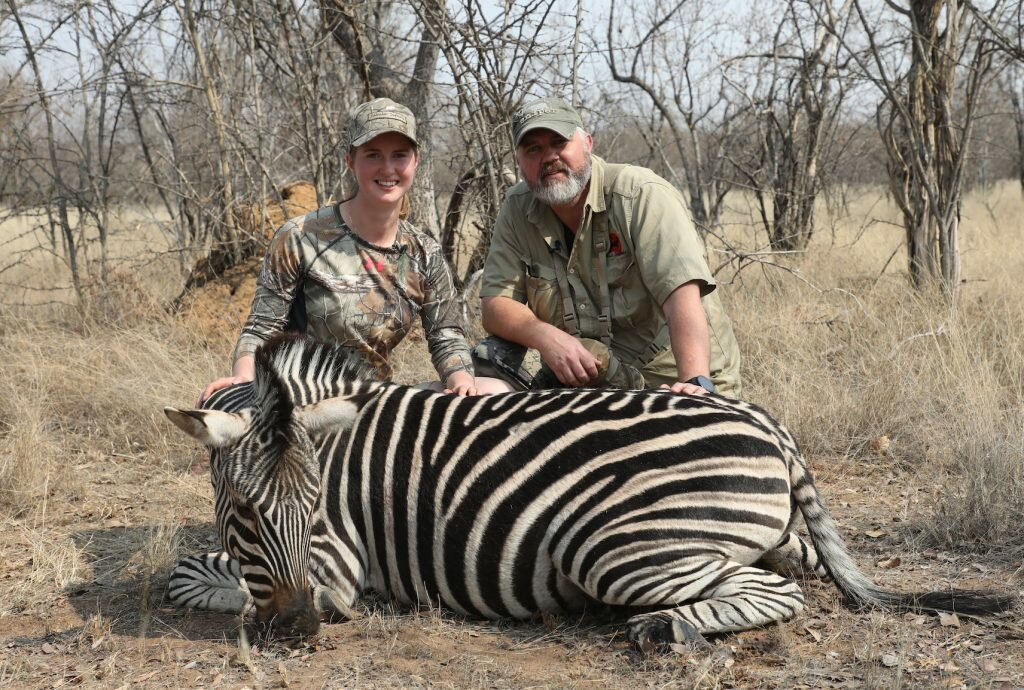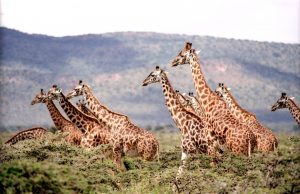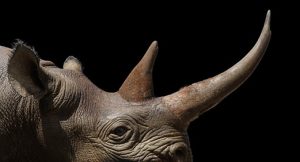There was a time when photography was considered the ultimate truth; when a simple image was capable of telling 1000 words. Unfortunately, in an age where digital manipulation has become commonplace, it is much more common for a picture to tell 1000 lies than a single truth. In this article, we look at how fake photography is being used to manipulate the public to believe radical ideologies and how animal activists and anti-hunters are playing on your emotions to get you to believe their lies.
From April Fools to Photo of the Century
Remember the image of an elephant carrying a lion cub across the road that was posted on Twitter back in 2018? The account was called Kruger Sightings and within hours, the post had gone viral, spreading across social media, popping up in newspapers and even hitting the television news. The caption on the post stated that the photographers were following a lioness who was carrying her cub and that an elephant showed up to help her when she was tired. According to the post, the elephant put down its trunk, the cub climbed on, and the elephant carried the baby lion across the road.
Within two days, the heart warming image had been shared more than 20 million times with many calling it the photo of the century. Almost every share of the image made mention of the kindness of animals, with some using the image to mock humanity for not being as benevolent and kind as animals. It didn’t take long for the animal activists and anti-hunting organisations to start using the image to milk donations and tug on heart strings.
There was just one problem. The photograph was a fake.


When the forgery was discovered, Kruger Sightings said the post was simply an April Fool’s joke that worked a little better than they thought it would.
Yet the fact still remains that tens of millions of people were successfully fooled into believing that animals exhibit superior benevolence and kindness than the human race! And not just believe it enough to click like, but believe it enough to share the idea on their own profiles.
We live in an era of instant fact-checking, yet ironically, it is often lies that spread faster than truth, particularly if they play into a pre-existing belief or idea.
It’s the Hollywood or Disney effect. We have been conditioned through movies and cartoons to believe animals exhibit human traits and characteristics – ie that they have complex family structures, cross-species relationships, and human feelings and emotions.
There’s even a very long official word for it – anthropomorphism, which basically means animals acting like humans.
If Alex and Marty can be best friends in Madagascar, surely a lion and an elephant can forget their predator and prey classifications to show each other kindness, right?
In this example, the fake image was only ever intended as a joke yet was still able to deceive millions of people. What happens when a fake image is deliberately used to deceive people?
Animal rights organisations like PETA have long come under scrutiny for using fake imagery and deceptive claims to elicit donations and win people to their cause.
A few years ago, an image was circulating on the internet of a glass of milk in its ‘natural’ state. The milk was pink, and the claim was that commercial milk had to go through a bleaching process to remove the blood and pus from the natural product.
There were thousands of comments from gullible people who completely believed the ludicrous claim and vowed they would never drink milk again!
 Then there was the PETA ad campaign to convince people of the evils of wool. They used a bloody, disfigured and frankly, scary looking baby lamb to get people to believe that using wool was cruel and inhumane.
Then there was the PETA ad campaign to convince people of the evils of wool. They used a bloody, disfigured and frankly, scary looking baby lamb to get people to believe that using wool was cruel and inhumane.
There’s just one thing: wool is one of the most sustainable and renewable fibres on the planet, and a sheep being shorn is about as cruel as a human getting a haircut or having a shave.
Context means everything
Sometimes, it’s not fake imagery but real images taken out of context that create hysteria.
Remember the starving polar bear that became the poster child for Climate Change?

The image went viral and was used by a huge number of wildlife and environmental groups to elicit donations.
Turns out he was more than likely just a sick bear and, as polar bears have very few natural predators (barring man), he would have continued to decline in health until he starved to death.
This is the reality of nature. It happens to polar bears. It happens to regular bears. It happens to lions as well.
It doesn’t always mean the sky is falling or the world is about to explode in a fiery ball.
Nor does a single occurrence necessarily mean an issue is widespread.
Take the turtle who swallowed a plastic straw. The video of that straw being removed was so gruesome and was shared so widely on social media that it resulted in a worldwide ban of plastic straws!
In the years since that video went viral, there have not been millions of turtles washing up on beaches with straws in their nostrils. Or even hundreds. As far as I know, that was the only turtle ever found like it.
This really does go to show how powerful a single image can be. Unfortunately, we are seeing more and more cases online of images being faked, manipulated or shared without proper context – images that become weapons to force societal change.
As hunters, we are a natural targets for these kinds of misinformation campaigns. Just last year, an anti-hunting group used photographs they had found on social media of wallabies being hunted with dogs to paint the activity as bloodthirsty and barbaric, sharing a video they had created so widely that it caught the attention of the media. For several months, there were several calls to ban hunting with hounds as a result even though the whole thing had been deliberately manipulated to look much worse than it was.
While we definitely don’t agree with the approach of keeping all hunting images off social media, it does pay to think about how the images could be misrepresented or manipulated to tell a different story.
They say a picture tells 1000 words but as we have just shown, a picture with a backstory designed to play on your emotions can do so much more damage.
What is I Am Hunter?
I Am Hunter wants to change the way hunting is perceived and to change the conversation from a negative one driven by anti-hunters to a positive one led by hunters.
Our goal is to help hunters become positive role models and ambassadors for hunting, while simultaneously helping non-hunters understand why hunting is important.
You can become a supporter and help us achieve our goal and spread a positive message about hunting with the wider community.
Related content
Our other channels
Follow us on Facebook
Follow us on Instagram
YouTube
Subscribe to our YouTube channel.
Get our newsletter
Get our free monthly newsletter direct to your inbox
Listen on iTunes
Listen to our podcast on iTunes.
TV series
Watch I Am Hunter episodes on My Outdoor TV (MOTV)







